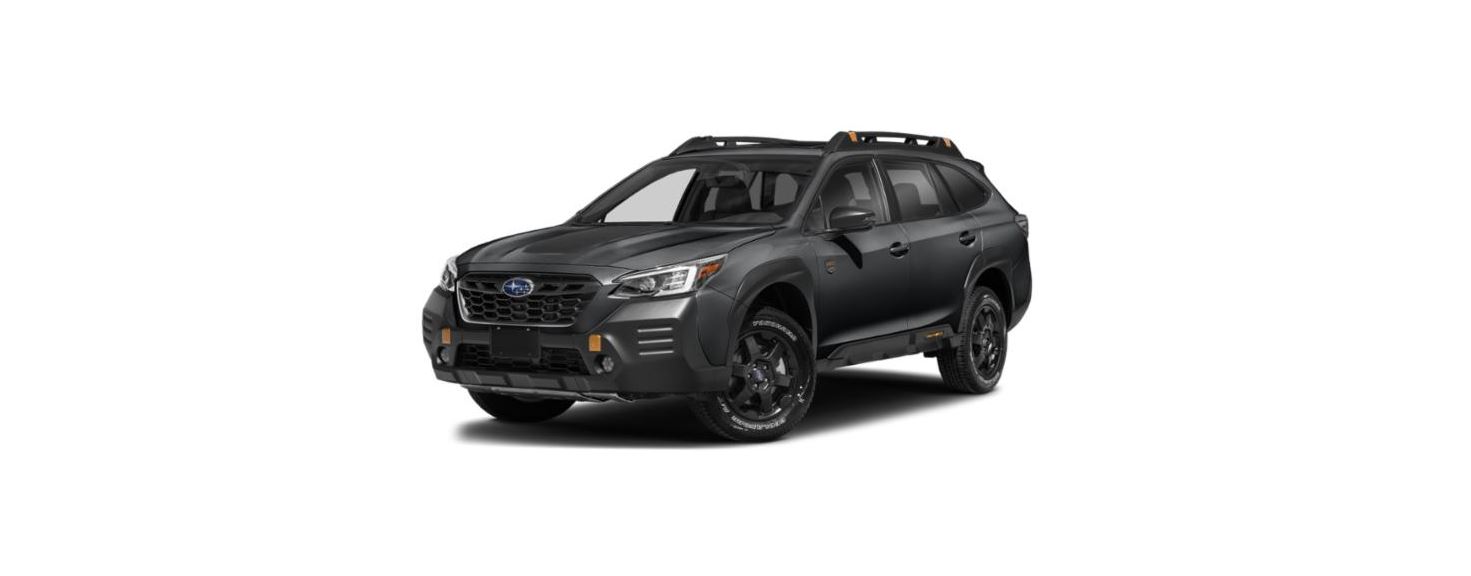2022 Subaru Outback Engine Oil
 Engine Oil
Engine Oil
CAUTION
- If the level gauge is not pulled out easily, twist the level gauge right and left, then pull it out. Otherwise, you may be injured accidentally straining yourself.
- Use only engine oil with the recommended grade and viscosity.
- Be careful not to spill engine oil when adding it. If oil touches the exhaust pipe, it may cause a bad smell, smoke, and/or a fire. If engine oil gets on the exhaust pipe, be sure to wipe it off
Engine Oil Consumption
Some engine oil will be consumed while driving. The rate of consumption can be affected by such factors as transmission type, driving style, terrain, and temperature. Under the following conditions, oil consumption can be increased and thus require refilling between maintenance intervals:
- When the engine is new and within the break-in period
- When the engine oil is of lower quality
- When the incorrect oil viscosity is used
- When engine braking is employed (repeatedly)
- When the engine is operated at high engine speeds (for extended periods of time)
- When the engine is operated under heavy loads (for extended periods of time)
- When towing a trailer (Outback/Subaru Outback Wilderness)
- When the engine idles for extended periods of time
- When the vehicle is operated in stop and go and/or heavy traffic situations
- When the vehicle is used under severe thermal conditions
- When the vehicle accelerates and decelerates frequently
Under these or similar conditions, you should check your oil at least every 2nd fuel fill-up and change your engine oil more frequently. Different drivers in the same car may experience different results. If your oil consumption rate is greater than expected, contact your authorized SUBARU retailer who may perform a test under controlled conditions
Checking the Oil Level
- Park the vehicle on a level surface and stop the engine. If you check the oil level just after stopping the engine, wait for at least 5 minutes for the oil to drain back into the oil pan before checking the level.
2.5 L models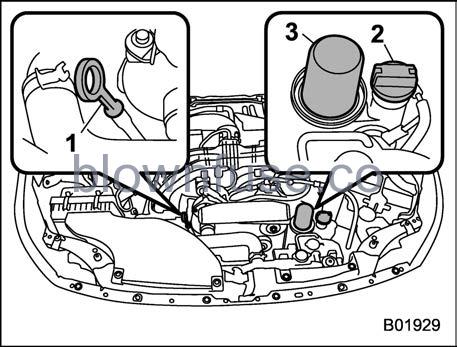
- Oil level gauge
- Oil filler cap
- Oil filter
2.4 L models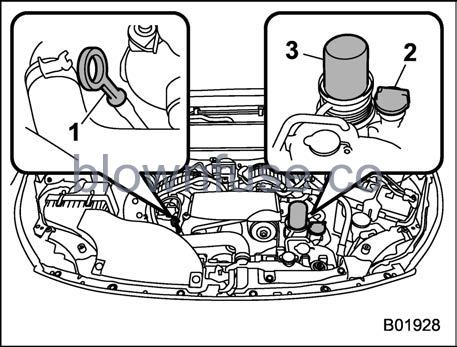
- Oil level gauge
- Oil filler cap
- Oil filter
CAUTION
If the level gauge is not pulled out easily, twist the level gauge right and left, then pull it out. Otherwise, you may be injured accidentally straining yourself.
- Pull out the level gauge, wipe it clean, and insert it again.
- Be sure the level gauge is correctly inserted until it stops.
2.5 L models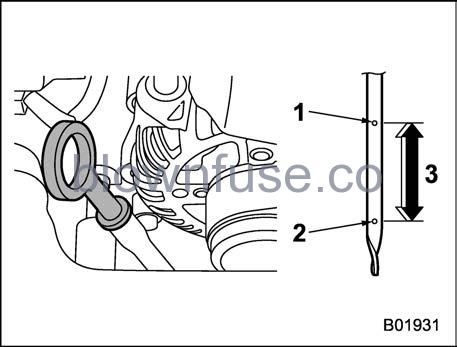
- Full level
- Low level
- Approximately 1.1 US qt (1.0 liter, 0.9 Imp qt) from low level to full level
2.4 L models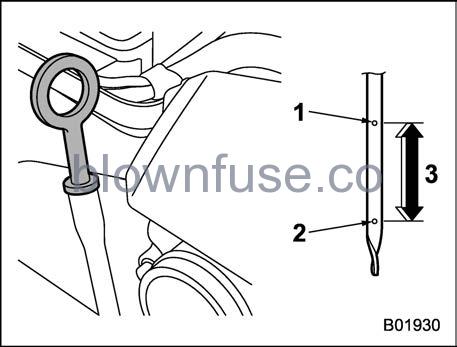
- Full level
- Low level
- Approximately 1.1 US qt (1.0 liter, 0.9 Imp qt) from low level to full level
- Pull out the oil level gauge again.
- Check the oil level on the gauge. If the oil level is below the low-level mark, add oil so that the full level is reached
CAUTION
- Be careful not to touch the engine oil filter when removing the oil filler cap. Doing so may result in a burn, a pinched finger, or may cause some other injury.
- Use only engine oil with the recommended grade and viscosity.
- Be careful not to spill engine oil when adding it. If oil touches the exhaust pipe, it may cause a bad smell, smoke, and/or a fire. If engine oil gets on the exhaust pipe, be sure to wipe it off.
To add engine oil, remove the engine oil filler cap and slowly pour engine oil through the filler neck. After pouring oil into the engine, you must use the level gauge to confirm that the oil level is correct.
NOTE
- To prevent overfilling the engine oil, do not add any additional oil above the full level when the engine is cold.
- After adding or changing the engine oil, warm up the engine and stop it on a level surface, then start the engine after a lapse of 1 minute or more. Confirm that the warning light has turned off after the engine has started. Refer to “Engine Low Oil Level Warning Indicator” P185.
Changing the Oil and Oil Filter
Change the oil and oil filter according to the maintenance schedule in the “Warranty and Maintenance Booklet.”
NOTE
- Changing the engine oil and oil filter should be performed by a well-trained expert. Contact your SUBARU dealer for changing the engine oil and oil filter. Fully trained mechanics are on standby at a SUBARU dealer to utilize the special tools, spare parts, and recommended oil for this work, and also, used oils are properly disposed of.
- If performing oil replacement yourself, observe the local regulations and dispose of waste oil properly.
Recommended Grade and Viscosity
CAUTION
Use only engine oil with the recommended grade and viscosity.
NOTE
Engine oil viscosity (thickness) affects fuel economy. Oils of lower viscosity provide better fuel economy. However, in hot weather, oil of higher viscosity is required to properly lubricate the engine.
Synthetic Oil
You should use synthetic engine oil that meets the same requirements given for conventional engine oil. When using synthetic oil, you must use oil of the same classification, viscosity, and grade shown in this Owner’s Manual. Refer to “Engine Oil” P542. Also, you must follow the oil and filter change intervals shown in the “Warranty and Maintenance booklet.”
NOTE
Synthetic oil of the grade and viscosity noted in chapter 12 is the recommended engine oil for optimum engine performance. Conventional oil may be used if synthetic oil is unavailable
